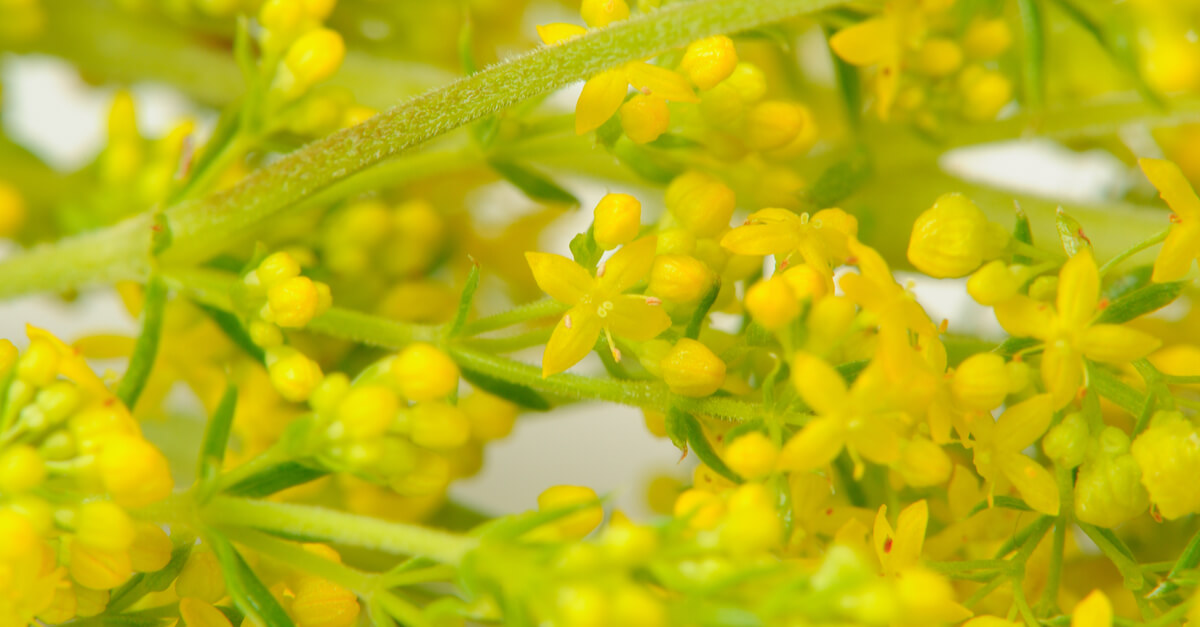It is usually seen on St John’s Day when wreaths of its flowers are made and hung on the door. The yellow flowers smell of honey and are a true symbol of a warm and carefree summer. Lady’s bedstraw is not only a decorative plant – it has been used widely throughout history, both in the household and in folk medicine.

In the past, lady’s bedstraw was used as rennet – with the help of its leaves milk curdles and at the same time cheese develops a sweet taste and a beautiful yellow colour. That is why it was called ‘cheese renning’ in England for a while. Even today, this cheese-making technique lives on in some Greek villages; the milk association has remained in the plant’s scientific name, Galium verum, from the Greek gala, meaning milk.
The English name used for this plant today, lady’s bedstraw, originates from the medieval custom of filling mattresses with dried lady’s bedstraw. In addition to smelling nice, this plant also contains a large percentage of coumarin, which successfully repelled insects, especially fleas, then not only a menace but also a carrier of dangerous diseases.

Lady’s bedstraw has the widest use in treating diseases both around the world and in our region. It contains a number of beneficial ingredients: quercetin glycosides, saponins, flavonoids, minerals, organic acids, vitamin C, essential oil…
One of the main characteristics of this beautiful plant is that it is a powerful cleanser of the body: it helps expel harmful substances from the liver, spleen, kidneys and pancreas. If used regularly, it cleanses both the urinary tract and the lymphatic system. The body can blossom when it rids itself of toxins: the skin becomes radiant, the stomach and intestines work better and absorb nutrients from food more efficiently, there are no allergies, and metabolism functions at full strength.

Which organs benefit from lady’s bedstraw? Liver, stomach, skin, the nervous system, digestive organs, kidneys and the urinary tract, respiratory organs, vocal cords, thyroid gland, the female reproductive system… therefore – the whole body. This herb helps when our joints swell, when we have irritations or skin disorders such as eczema or psoriasis, when we are hoarse, anaemic, when we suffer from constipation, leg cramps, haemorrhoids, have difficulty urinating, have sand or kidney stones, suffer from hypothyroidism, metabolic syndrome, cellulite and obesity. It can also help with more complex disorders: in French traditional medicine, it is known as a therapy for epilepsy. When used as a dressing, it has a healing effect on wounds, inflammations, subcutaneous ulcers and blackheads, and even melanoma.
Lady’s bedstraw has the power to “curb” an excessive feeling of hunger, and as it stimulates the lymph and expels excess fluid, it is effective for cellulite. That is why it is a common ingredient in fitness herbal mixtures. This “super-cleanser” helps us to be more beautiful, to bring our weight back to normal, to have clear skin and in general – to feel lighter and more energetic.
That is why it is not accidental that this great plant is an ingredient of Equigal along with angelica, mint, marigold and horsetail. Equigal is a completely natural preparation that helps with digestive issues, problems with obesity, bloating, distention, constipation, cellulite and swelling. It is especially suitable for body cleansing treatments in the spring and autumn. With lady’s bedstraw and Equigal we become as light as a summer’s day.

